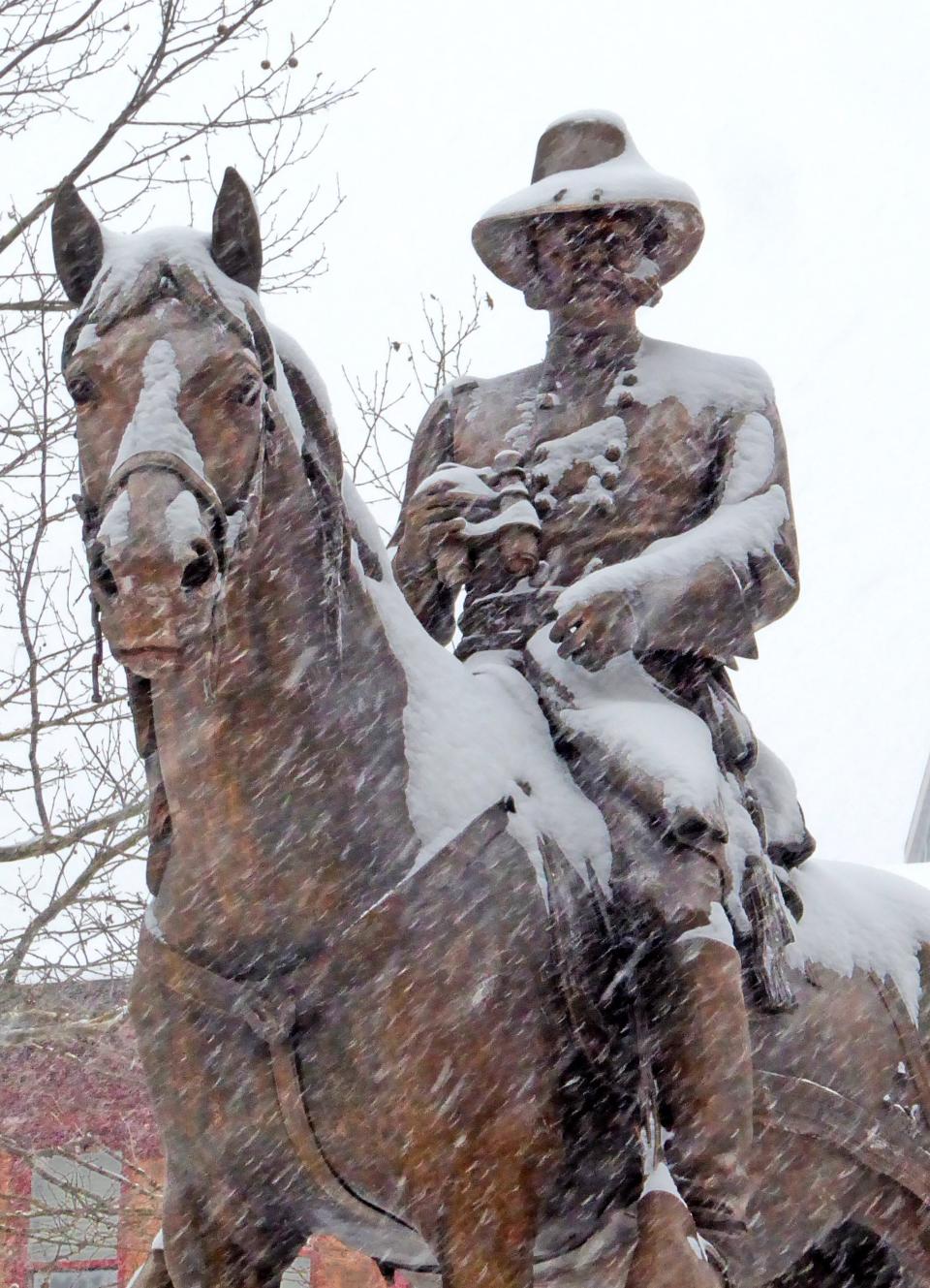Historians agree that the issue of slavery fractured the Union | Opinion
- Oops!Something went wrong.Please try again later.
Erik J. Chaput, a longtime educator, is the author of "The People’s Martyr: Thomas Wilson Dorr and His 1842 Rhode Island Rebellion."
For Rhode Island students and teachers, questions about the origins of the Civil War are generally central parts of the curriculum. Students learn about the control sought by Southern slaveholders in the corridors of power in Washington during the 1840s and 1850s. The South viewed the victory of an antislavery politician in the 1860 presidential election as a direct threat to its existence.
As the Mississippi legislature succinctly noted, “Our position is thoroughly identified with the institution of slavery.” The formation of the Confederacy followed Abraham Lincoln’s triumph at the polls.
The centrality of slavery in terms of the fracturing of the Union is the dominant view expressed by historians and recorded in textbooks. But yet, what seems to be self-evident remains far from clear to some. Nowhere was this more apparent than on the current presidential primary trail in New Hampshire.
More: Shot during the Battle of Antietam, he remains RI's highest-ranking battle casualty
When asked about the cause of the Civil War, Nikki Haley, the former Republican South Carolina governor who served as the United Nations ambassador during the Trump administration, responded: “I think it always comes down to the role of government and what the rights of the people are. I will always stand by the fact that I think the government was intended to secure the rights and freedoms of the people.” Haley, certainly no stranger to these questions, having dealt with controversies over the Confederate flag in her home state while governor and signing the bill which ordered its removal, offered up a states’ rights argument in response.

The next morning and again at a CNN forum days later, Haley offered a correction and stated that slavery was the cause.
Was her original statement in the moment a slip or an attempt not to offend a certain subset of voters? Perhaps a bit of both. But her response nevertheless tapped into the powerful Lost Cause ideology that emerged not long after the Confederate surrender in 1865 and reverberates to this day. It offers up an important teachable moment for educators looking to set the record straight with meaningful historical engagement.
More: Our Hidden History: R.I.'s little-known role in the Underground Railroad
Thanks to the creation of the Colored Convention Project website, Rhode Island teachers have an opportunity to incorporate another layer of the story, one that connects to the Reconstruction period following the Civil War and follows important and often overlooked Rhode Island reformers. It was the question of civil and political rights for Black Americans, raised during the war and implemented by Republicans in Congress, that fueled a Southern Lost Cause tradition and led to a profound racial backlash. As Yale University historian David Blight noted in his landmark book "Race and Reunion," as long as America “has a politics of race, it will have a politics of civil war memory.”
While the issue of slavery was abundantly clear on both sides of the conflict as the central cause, for abolitionists, particularly Black abolitionists, antislavery ideology encompassed more than the end of human bondage; it dealt with full civil and political equality. This is what scared the South after 1865 and led to high levels of violence in Southern states. One side was right and the other wrong as the abolitionist Frederick Douglass often reminded his audiences.
More: Juneteenth in Rhode Island at Casey Farm in Saunderstown
Two of the leading Black reformers championing political and civil equality were Newport’s George Downing and Providence’s James Jefferson. Teachers should explore Downing’s activism that led to the creation of the National Equal Rights League at a landmark convention in Syracuse, New York, in the fall of 1864, weeks before a major presidential election that resembles the current contest gripping the country. Downing was one of the leading voices against the closure of the American Anti-Slavery Society. William Lloyd Garrison, founder of the organization, believed that the group’s work had been accomplished with the destruction of slavery. Downing thought otherwise, that there was much work to be done.
The writer Robert Penn Warren’s argument that the Civil War remains “urgently our war, and, as we have said, reaches in a thousand ways into our bloodstream and our personal present” still rings true today.
This article originally appeared on The Providence Journal: The centrality of slavery in terms of the fracturing of the Union is the dominant view expressed by historians and recorded in textbooks.

